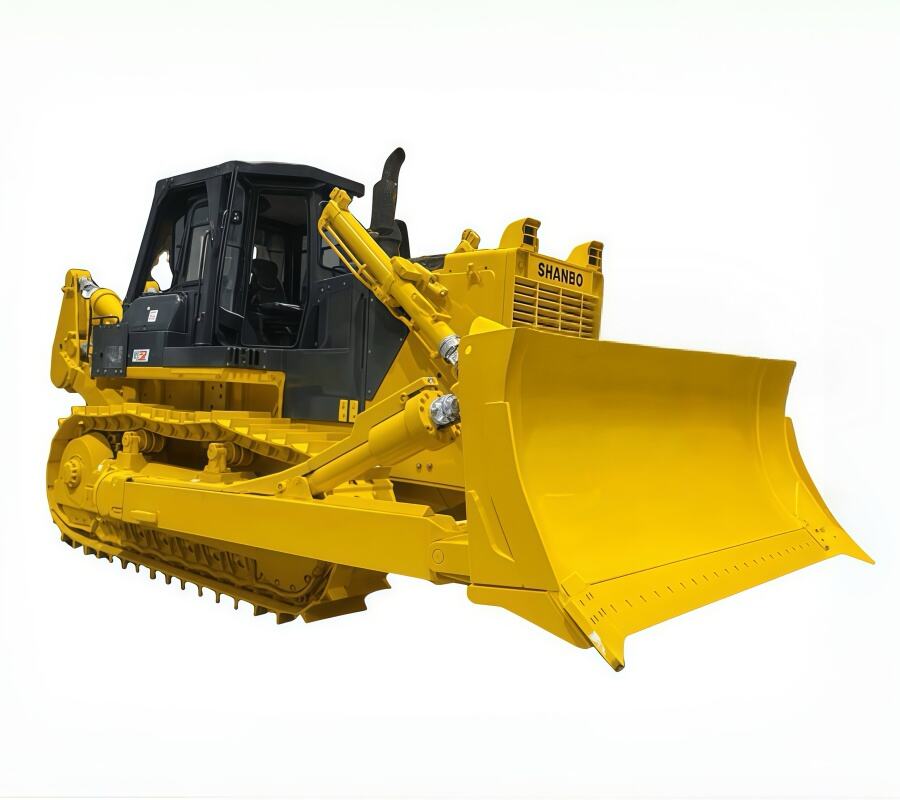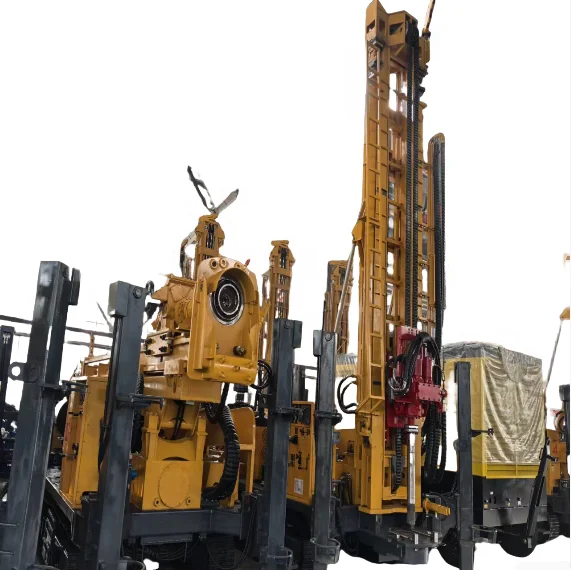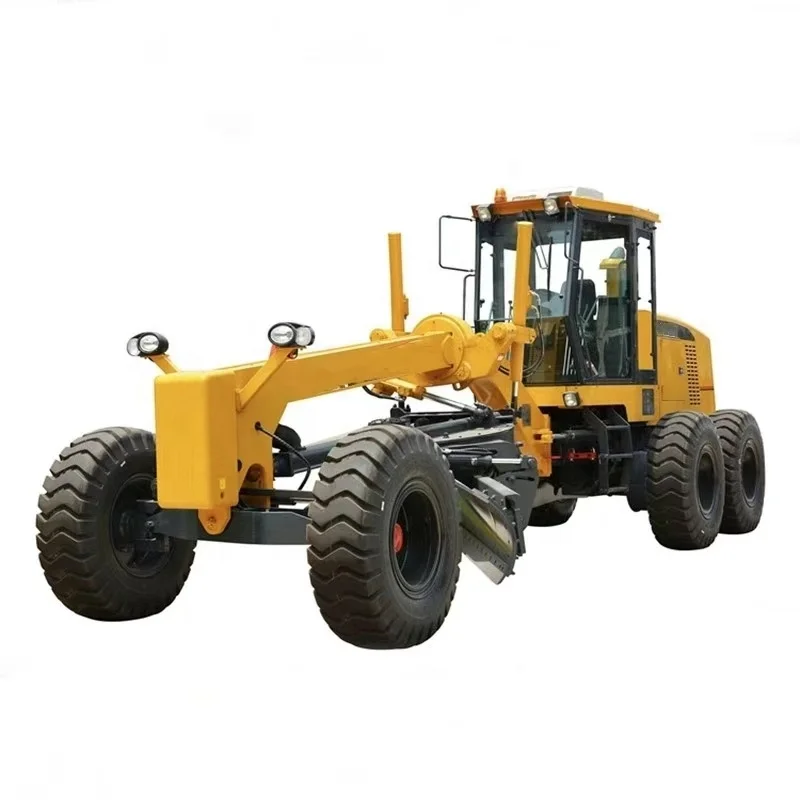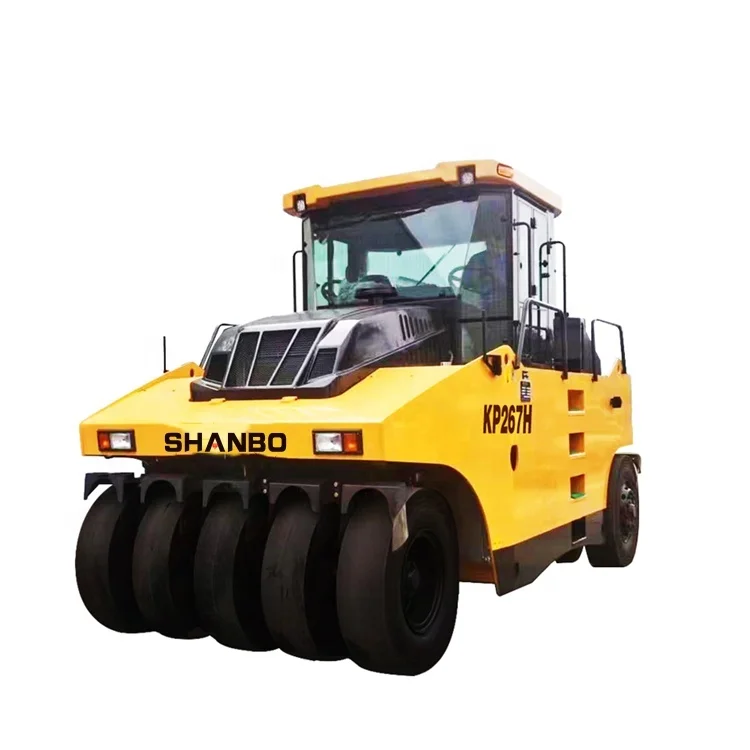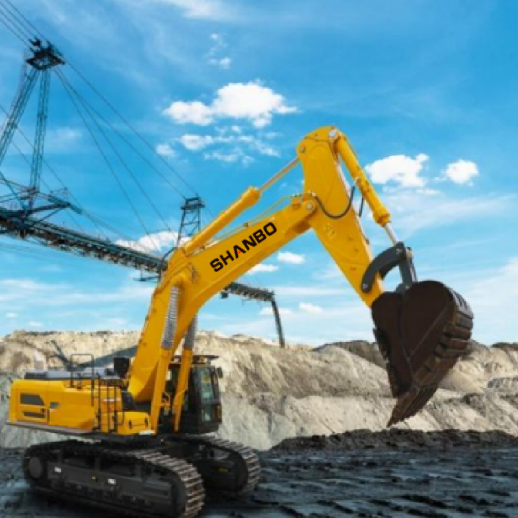A Comprehensive Guide to Different Types of Construction Equipment
Earth-Moving Equipment: Backbone of Construction Projects
Bulldozers: Versatile Powerhouses for Site Preparation
Bulldozers are indispensable in the construction industry, primarily due to their capacity for efficient site preparation. These machines are adept at land clearing, grading, and moving debris, displaying a remarkable adaptability that makes them essential on any construction site.
A bulldozer's ability to exert immense push force, often moving over 20 tons of earth in one stroke, allows contractors to perform significant tasks faster. In today’s rapidly urbanizing world, the demand for these powerful machines has surged. With construction projects booming, the demand for bulldozers is rising by 5% annually, underscoring their critical role in modern infrastructure development.
Excavators: Precision in Digging and Demolition
Excavators are at the forefront of construction technology, offering unmatched precision in tasks ranging from excavation to demolition. The versatility of these machines is largely due to their ability to support multiple attachments, enhancing their efficiency in digging, drilling, and breaking operations.
Technological advancements have significantly improved excavators with enhanced hydraulic systems, boosting their digging accuracy by up to 30%. This precision not only enhances project quality but also reduces time and labor costs. The market outlook for excavators remains robust, with a projected compound annual growth rate of 6.7% from 2021 to 2028, reflecting their growing importance in construction activities globally.
Motor Graders: Achieving Perfect Surface Leveling
Motor graders are essential for achieving perfect surface leveling, a critical component in road construction and preparation. Their prowess lies in their long blade, which ensures precise grading of materials such as gravel and asphalt, achieving surface accuracy of up to 50mm. This level of precision is vital to laying down durable and safe roadways.
To maintain their efficiency, regular maintenance and blade adjustments are necessary, which can reduce operational downtime by as much as 15%. For projects where precise grading is mandatory, motor graders are an irreplaceable asset, ensuring that surfaces are uniformly leveled and ready for further construction activities.
Road Construction Machinery: Building Durable Infrastructure
Road Rollers: Compaction for Long-Lasting Pavement
Road rollers are indispensable in pavement construction, providing essential compaction to soil and asphalt that fortifies the structural integrity and extends the lifespan of road surfaces. The key to their effectiveness lies in their ability to decrease the voids in the materials, which enhances their stability and strength.
Statistics reveal that when roads are properly compacted, maintenance costs can decrease by up to 40% over the course of their lifetime, offering substantial long-term savings. Various types of road rollers, such as vibratory and static rollers, cater to diverse compaction needs, thereby allowing contractors to select the most suitable equipment based on specific project requirements.
Road Grader Maintenance Tips for Optimal Performance
Proper maintenance of road graders is crucial for their optimal performance and longevity. Regularly checking fluid levels and adjusting the blade plays a significant role in extending the machine's life. By implementing a preventive maintenance schedule, operators can reduce unexpected equipment failures by 25%, ensuring that projects remain on track without costly delays.
Moreover, daily inspections before operation are key in identifying potential issues that could impair efficient performance, allowing for timely repairs and preventing further damage. These practices contribute to smoother operations and maintain the performance quality expected in construction projects.
Asphalt Pavers: Ensuring Smooth Road Surfaces
Asphalt pavers are integral to road construction, facilitating the efficient laying of asphalt to produce seamless road surfaces. Modern pavers are equipped with automatic grade control systems, which significantly enhance the consistency and quality of the pavement layer. This technology ensures that the asphalt is applied evenly, resulting in a smoother and more durable road surface.
Statistical analyses have shown that roads constructed using advanced asphalt paving technology not only provide a smoother ride for motorists but also contribute to reduced vehicle maintenance costs. This underscores the importance of employing technologically advanced asphalt pavers in modern infrastructure development.
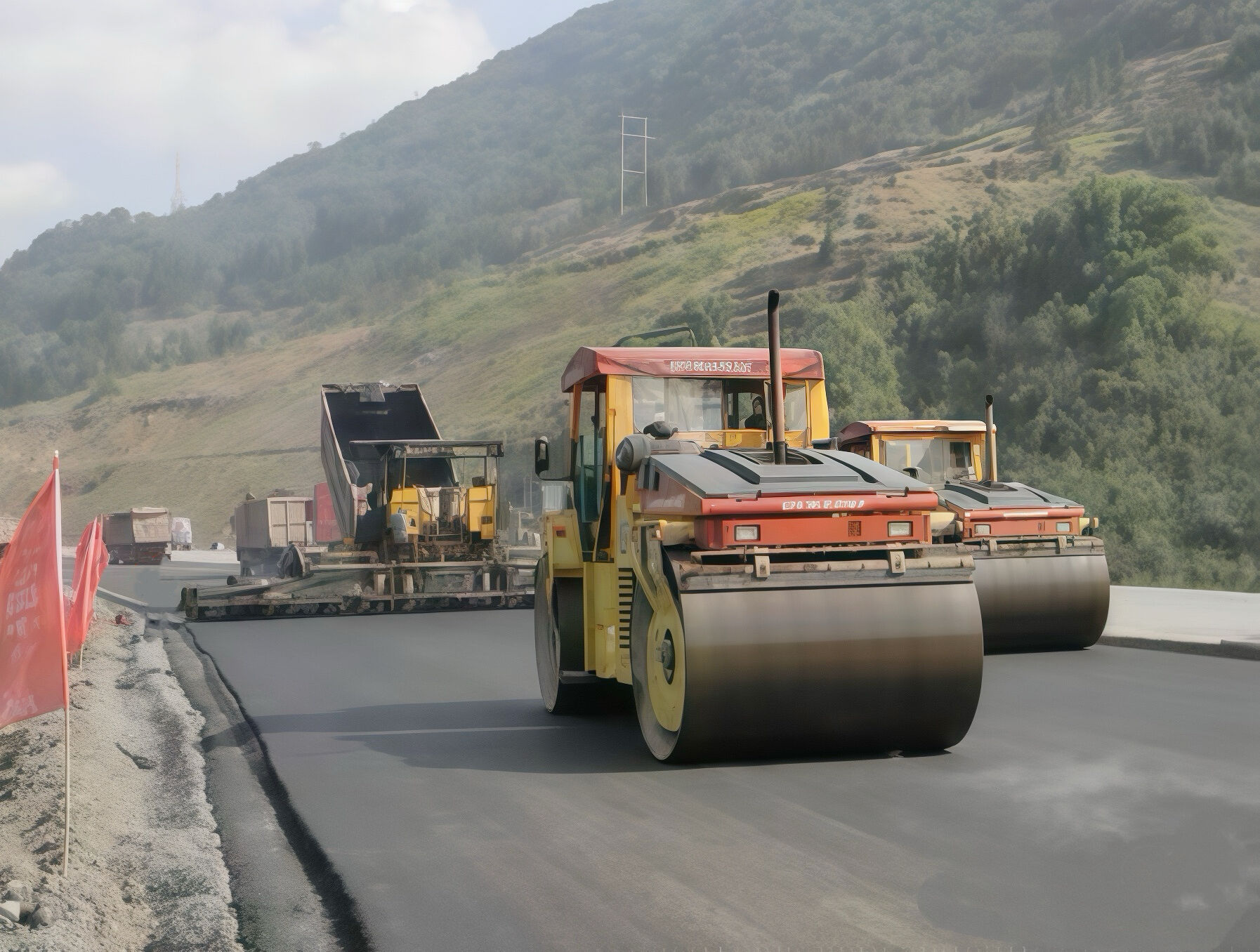
Material Handling Solutions: Efficient Load Management
Wheel Loaders: Multitasking Material Movers
Wheel loaders serve as essential equipment on construction sites, offering versatility in material handling and movement. These machines are designed to transport heavy loads efficiently across vast construction areas, greatly enhancing productivity. A recent survey shows a 7% increase in demand for wheel loaders within the construction sector, attributed to their efficiency and ability to handle bulky materials seamlessly.
To ensure optimal performance, it is crucial for operators to evaluate specific loader attributes, such as bucket size and lift capacity, and align these features with the specific requirements of each project.
Telehandlers: Combining Reach and Precision
Telehandlers are designed for tasks requiring extended reach and precise load positions, making them indispensable in construction scenarios involving height and distance. With the capability to lift materials weighing up to 5,000 lbs, telehandlers are well-suited for managing heavy loads across various job sites.
Furthermore, the adaptability of telehandlers can be significantly enhanced by utilizing different attachments, such as forks or buckets, thereby expanding their application range from construction to agriculture. These features highlight telehandlers as versatile tools that prioritize both reach and precision in diverse task environments.
Conveyor Systems for Bulk Material Transport
Conveyor systems revolutionize the transportation of bulk materials, facilitating efficient movement across diverse distances and streamlining construction workflows. By adopting conveyor belts, companies can significantly cut manual labor costs, with reductions estimated at around 30%. This not only decreases expenses but also ensures quicker project completion times.
To achieve long-term success and operational effectiveness, careful attention must be given to the customization and maintenance of these systems, focusing on how well they integrate with existing processes and infrastructure.
Drilling and Foundation Equipment: Creating Stable Bases
Well Drilling Rigs: Accessing Subsurface Resources
Well drilling rigs are critical tools for accessing subsurface resources such as fresh water and oil, which are essential for economic development and resource management. These rigs are capable of drilling to depths exceeding 10,000 feet, thanks to innovative technologies that enhance both speed and efficiency in drilling operations.
As water scarcity becomes a pressing global issue, market research indicates a growing demand for new well drilling rigs. This demand is driven not only by the need to access clean water but also by the opportunities in oil exploration, highlighting the rigs' importance in sectors critical to societal needs.
Borehole Drilling Machines: Key Considerations Before Purchase
Purchasing a borehole drilling machine is a significant investment and requires careful evaluation of several factors to ensure the equipment meets project needs. Key considerations include assessing the desired bore diameter and depth capabilities, taking into account the specific requirements of the intended projects.
Additionally, potential buyers must examine the manufacturer's reputation, warranty offerings, and the availability of technical support to avoid future complications. Shanbo offers a wide range of high-performance drilling rigs to meet a variety of operational needs.
Pile Drivers: Ensuring Structural Integrity
Pile drivers play a crucial role in construction by providing deep foundation solutions, which are vital for enhancing the stability and safety of structures. The effectiveness of pile driving significantly reduces settling issues, leading to improved long-term structural integrity by as much as 30%.
Investing in modern pile drivers not only ensures compliance with current safety regulations but also reduces liability risks associated with engineering projects. These benefits make pile drivers a fundamental piece of equipment for any construction endeavor focused on sustainability and regulatory adherence.
Compaction Equipment: Ensuring Ground Stability
Vibratory Rollers: Soil Compaction Techniques
Vibratory rollers use a combination of static and dynamic forces to achieve optimal soil compaction levels in construction projects. This equipment is essential in enhancing the load-bearing capacity of soil, with expert research indicating that proper compaction techniques can increase load-bearing capacity by 25%, thus preventing future structural failures.
Regular training for operators is crucial to ensure adherence to best practices, which enhances the safety and efficiency of construction projects. Training also equips operators with the skills needed to implement the advanced techniques offered by modern vibratory rollers.
Plate Compactors for Confined Spaces
Plate compactors are intended for use in small, confined spaces where larger machinery cannot operate effectively, making them essential for many residential projects. These compact machines are notable for their portability and typically weigh between 100 to 250 lbs, allowing them to be easily maneuvered in tight spaces.
Ensuring proper maintenance and handling of plate compactors can significantly improve their lifespan. This proactive care can reduce long-term costs for construction companies, providing a sound financial strategy while ensuring efficient operation in various construction scenarios.
Choosing Between Smooth vs. Padfoot Rollers
Understanding the difference between smooth and padfoot rollers is critical for selecting the right equipment to enhance project effectiveness. Smooth rollers are ideal for asphalt compaction due to their ability to create a smooth surface, while padfoot rollers excel in cohesive soil conditions due to their unique design.
It is highly recommended to consult with engineering teams for insights into choosing the best roller to maximize compaction efficiency based on soil type. Statistical studies have shown that utilizing the appropriate roller for the specific soil condition can improve compaction rates by up to 40%, significantly impacting project timelines and overall outcomes.
Specialized Construction Tools: Niche Applications
Trenchers: Efficient Pipeline Installation
Trenchers are essential tools for efficient pipeline installation, as they are specifically designed to dig trenches for utility installations. Their capacity to lay pipelines swiftly and efficiently makes them indispensable in projects where time is of the essence. Advanced trenching technology allows these machines to dig with minimal soil disruption, thereby maintaining the integrity of the project site.
Using trenchers can streamline construction schedules, cutting installation time in half compared to manual labor. This efficiency not only boosts productivity but also reduces costs significantly, making trenchers a valuable investment for construction companies aiming to optimize their workflows.
Demolition Robots: Safe Structural Breakdown
Demolition robots revolutionize the approach to safe and efficient structural breakdown work. By significantly reducing the risks associated with manual demolition, these robots enhance safety on construction sites. Equipped with various advanced tools such as hydraulic hammers and concrete crushers, demolition robots can handle complex tasks with remarkable precision.
Industry experts have noted that the use of demolition robots leads to a 30% reduction in labor costs while ensuring worker safety. This transformative technology not only speeds up demolition processes but also mitigates the challenges of handling hazardous materials, reinforcing its value in modern construction settings.
Horizontal Directional Drilling Machines
Horizontal Directional Drilling (HDD) machines play a crucial role in the installation of underground utilities, minimizing surface disruption—a critical factor in modern construction. These machines offer precision placement of pipes and cables, ensuring infrastructure projects meet the evolving demands of urban environments.
The HDD method is particularly favored for its reduced environmental impact, a significant advantage in city areas where traditional methods may cause disruptions. Not only do these machines preserve above-ground landscapes, they also align with sustainable construction practices, marking them as essential equipment for forward-thinking infrastructure projects.
Equipment Acquisition Strategies
Buying vs. Renting Construction Machinery
Deciding between buying and renting construction machinery is a common dilemma for contractors, as it involves considering several financial aspects, project duration, and anticipated usage frequency. Renting offers significant flexibility, particularly for short-term projects where ownership might not be necessary. It allows businesses to access the latest models without the high upfront costs.
On the other hand, purchasing equipment could prove more cost-effective over the long term for companies with ongoing or frequent project needs. An industry survey highlights that approximately 40% of contractors prefer renting equipment, primarily due to the rapid advancements in construction technology, which can quickly render purchased equipment obsolete.
Evaluating Bulldozer Specifications for Project Needs
Choosing the right bulldozer for a construction project is not just about size; it requires a careful assessment of specifications like horsepower, weight class, and blade width. These specifications must align with the specific demands of the project to optimize performance. Professional evaluations highlight that accurately matching bulldozer specifications with project requirements can potentially enhance efficiency by up to 35%.
Thus, consulting with experts is indispensable, as their insights can lead to informed decisions that significantly improve overall project outcomes. By aligning equipment capabilities with project demands, contractors are more likely to achieve optimal efficiency and cost-effectiveness.
Understanding Drilling Rig Machine Capabilities
Understanding the capabilities of drilling rig machines is paramount for successful project planning. This includes evaluating essential specifications such as depth and pressure ratings, which are critical for determining the range of applications a machine can competently handle. Faulty assessments in this area can lead to the underutilization of equipment, which could inflate project costs by as much as 20%.
To avoid such inefficiencies, collaborating with specialists during the acquisition phase is crucial. Their expertise ensures that the selected drilling equipment aligns perfectly with the unique demands of the project, thus optimizing operational effectiveness and safeguarding financial investments.
Conclusion
To successfully navigate the world of construction equipment, a strategic approach to equipment acquisition is crucial. Whether choosing to buy or rent, each option has its distinct advantages and disadvantages based on financial implications, project duration, and usage frequency. Understanding specific machinery specifications, like those of bulldozers and drilling rigs, is vital for aligning with project needs, which can significantly boost efficiency and reduce costs.
Collaborating with industry experts, such as Shanbo, during the selection process is often beneficial, leading to more informed decisions and better project outcomes. By considering these factors, construction professionals can enhance their operational effectiveness and cost management.
Recommended Products
 Hot News
Hot News
-
“Water Savior” 200 m Reverse Circulation Water Well Drills Arrive in Uzbekistan
2025-03-28
-
What Is a Bulldozer? Everything You Need to Know
2025-02-18
-
How to Operate a Bulldozer in Different Terrain Types
2025-04-24
-
How Much Does a Bulldozer Weigh and How Does It Affect Performance
2025-04-23
-
Factors to Consider When Selecting a Construction Equipment Supplier
2025-04-22
-
What Are the Most Commonly Replaced Bulldozer Parts
2025-04-21
